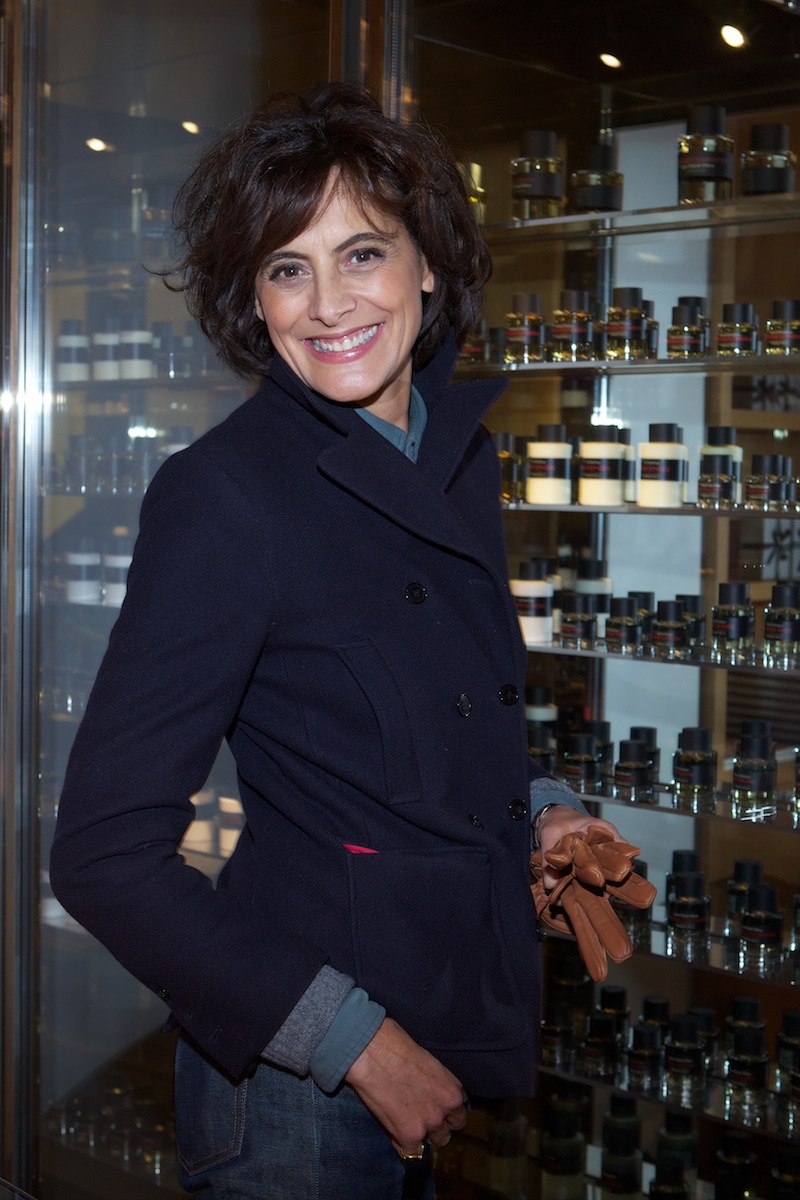Frédéric Malle: The Noses Have It
Frédéric Malle’s Editions de Parfums on rue du Mont Thabor in Paris (he has three in the city, plus a nook in Printemps’ new La Belle Parfumerie) look like the consultation rooms of an extremely elegant psychiatrist’s office—complete with red-lit scent chambers he designed, which recall Star Trek. Considering Malle’s approach to scent creation, psychology is not that far off. Since his start in 2000, Malle has been on a mission to bring back intimacy in fragrance, a concept that has all but evaporated in this blockbuster era where a new scent formulated to please almost everybody circles the globe powered by mega-advertising and star frontage. Last night, Malle celebrated the launch of his book On Perfume Making (Angelika Books) at his rue du Mont Thabor store with friends Catherine Deneuve (who penned the preface), philosopher Bernard-Henri Lévy, singer/actress Arielle Dombasle, Inès de la Fressange, Martine Sitbon, Vincent Darré, Elie Top, Yaz Bukey, Maria Luisa Poumaillou, Catherine Baba, and Hervé Vanderstraeten. Malle’s tome reads like a detective novel, covering his olfactory adventures editing 18 scents with nine crème-de-la-crème noses. Lavishly illustrated by Konstantin Kakanias, known for his renderings of the eccentric Mrs. Tependris, the book functions like a mouthwatering recipe to lure you into a fragrance binge.
“I used to always wear Guerlain’s Chamade, but after I met Frédéric I became unfaithful,” says Catherine Deneuve, who recalls in the book’s preface how she got into character to play the “coquette” Madeleine in Christophe Honoré’s Les Bien-Aimés: with Roger Vivier shoes and Lipstick Rose, a heady scent from Editions de Parfums by Ralf Schwieger. Malle describes it as “part Gilda, part Silvana Mangano”: a blend of violet, grapefruit, rose, iris, raspberry and vanilla. Comic Valérie Lemercier is into Malle’s Fleur Mecanique, a red cube that charges like a cell to diffuse home scents like Café Society, which evokes an après-fête mélange of smoke and intermingled perfumes.
Malle’s account also touches on the lives of nine of his perfumers. He knew several as a child growing up in Saint Germain des Près: Malle is the grandson of Serge Heftler, the founder of Parfums Christian Dior, and the nephew of director Louis Malle. This is very much the book of an obsessive lover of scent—a man who will, in the process of perfecting a new fragrance, live with a half-dozen versions of it, placed strategically in a U shape up both arms, so that he can note throughout the day, and after a night’s sleep, his precise impressions of each one.
Malle has often described his job as an editorship, and refers to his perfumers like authors. “I don’t really think of myself as a publisher, but many of my friends are and I realize that the relationship they have with writers is very similar to the one I have with perfumers. Either I keep quiet and let them do their own thing—like I suppose Gallimard did with François Mauriac—just check the spelling mistakes and have it printed. Musc Ravageur, for example, is a fragrance I hardly worked on. With others, I had a much more hands-on relationship, because some people need a partner.”
Today, Malle can’t imagine going back to the giant lab in France where he worked on big fragrances at the start of his career. “When you want to seduce everyone, you become boring, and you lose your soul,” he says, like a true Frenchman. However, Dior is always present in his mind. “When I was a child, the first smell I liked was perfume, because I was brought up smelling them. And when you begin with Miss Dior, you end up doing Portrait of a Lady [Editions de Parfum’s newest scent, by Dominique Ropion]. Something like that sets a standard that elevates you for everything else.”







